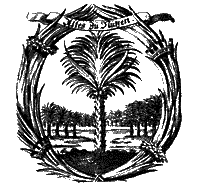
Saxe-Coburg and Gotha, or Saxe-Coburg-Gotha, was an Ernestine, Thuringian duchy ruled by a branch of the House of Wettin, consisting of territories in the present-day states of Thuringia and Bavaria in Germany. It lasted from 1826 to 1918. In November 1918, Charles Edward, Duke of Saxe-Coburg and Gotha, was forced to abdicate. In 1920, the northern part of the duchy was merged with six other Thuringian free states to form the state of Thuringia: Saxe-Weimar-Eisenach, Saxe-Altenburg and Saxe-Meiningen, Schwarzburg-Rudolstadt and Schwarzburg-Sondershausen, as well as the People's State of Reuss. The southern part of the duchy, as southernmost of the Thuringian states, was the only one which, after a referendum, became part of Bavaria.
Prince Maria Emanuel of Saxony, Duke of Saxony, Margrave of Meissen was the head of the Royal House of Saxony.

The House of Wettin is a dynasty of German counts, dukes, prince-electors and kings that once ruled territories in the present-day German states of Saxony, Saxony-Anhalt and Thuringia. The dynasty is one of the oldest in Europe, and its origins can be traced back to the town of Wettin, Saxony-Anhalt. The Wettins gradually rose to power within the Holy Roman Empire. Members of the family became the rulers of several medieval states, starting with the Saxon Eastern March in 1030. Other states they gained were Meissen in 1089, Thuringia in 1263, and Saxony in 1423. These areas cover large parts of Central Germany as a cultural area of Germany.

Saxe-Altenburg was one of the Saxon duchies held by the Ernestine branch of the House of Wettin in present-day Thuringia. It was one of the smallest of the German states with an area of 1323 square kilometers and a population of 207,000 (1905) of whom about one fifth resided in the capital, Altenburg. The territory of the duchy consisted of two non-contiguous territories separated by land belonging to the Principality of Reuss. Its economy was based on agriculture, forestry, and small industry. The state had a constitutional monarchical form of government with a parliament composed of thirty members chosen by male taxpayers over 25 years of age.

The Fruitbearing Society was a German literary society founded in 1617 in Weimar by German scholars and nobility. Its aim was to standardize vernacular German and promote it as both a scholarly and literary language, after the pattern of the Accademia della Crusca in Florence and similar groups already thriving in Italy, followed in later years also in France (1635) and Britain.
Saxe-Gessaphe is the name of a family descended in the female line from former kings of Saxony, a member of which was recognized by a childless pretender to that throne as eventual heir to the deposed dynasty's rights. The claim is contested by an agnatic descendant of the former royal house, and both claims are clouded by conflicting interpretations of the dynastic laws which governed the succession to the defunct throne of Saxony, and by familial dispute.

Alexander, Prince of Saxe-Gessaphe, is the adopted son and heir of Maria Emanuel, Margrave of Meissen, and a businessman with Lebanese, Mexican and German roots. Following the death of Maria Emanuel in July 2012 he assumed the headship of the Royal House of Saxony, based on a 1997 agreement that named him heir, but which was repudiated a few years later by a number of signatories. His claim is disputed by his cousin Prince Rüdiger of Saxony.
Hubertus Michael, Hereditary Prince of Saxe-Coburg and Gotha, Duke of Saxony is the heir-apparent of the head of the family which ruled the Duchy of Saxe-Coburg and Gotha until 1918.

Ernst Wolrad, Prince of Schaumburg-Lippe was a head of the Princely House of Schaumburg-Lippe.

Johann Philipp, was a duke of Saxe-Altenburg.

Prince Albert Joseph Maria Franz-Xaver of Saxony, Duke of Saxony, Margrave of Meissen was the head of the Royal House of Saxony and a German historian. The fourth child and youngest son of Friedrich Christian, Margrave of Meissen and his wife Princess Elisabeth Helene of Thurn and Taxis, he was the younger brother of Maria Emanuel, Margrave of Meissen, who was his predecessor as head of the Royal House of Saxony.

Princess Maria Alix of Saxony, Duchess of Saxony was the sixth child and third-eldest daughter of Frederick Augustus III of Saxony and his wife Archduchess Luise of Austria, Princess of Tuscany and a younger sister of Georg, Crown Prince of Saxony and Friedrich Christian, Margrave of Meissen. Through her marriage to Franz Joseph, Prince of Hohenzollern-Emden, Maria Alix was a member of the House of Hohenzollern-Sigmaringen.

Princess Elisabeth Helene of Thurn and Taxis was a Princess of Thurn und Taxis by birth and a Princess and Duchess of Saxony, Margravine of Meissen, and titular Queen consort of Saxony through her marriage to Friedrich Christian, Margrave of Meissen. Elisabeth was the sixth child of Albert, 8th Prince of Thurn and Taxis and his wife Archduchess Margarethe Klementine of Austria.

Princess Maria Anna Josepha of Saxony, Duchess of Saxony was a Princess of Saxony and member of the House of Wettin by birth and a Princess of Gessaphe and member of the House of Afif-Gessaphe by marriage.
Princess Gisela Maria Karolina Adelgunde of Bavaria is a Princess of Bavaria and member of the House of Wittelsbach by birth and a Princess of Saxe-Gessaphe and member of the House of Saxe-Gessaphe by marriage.

Princess Dorothea Maria Henriette Auguste Louise of Saxe-Coburg and Gotha was a princess of Saxe-Coburg and Gotha by birth and the duchess of Schleswig-Holstein through her marriage to Ernst Gunther, duke of Schleswig-Holstein. Dorothea was born in Vienna, Austria, the second child and only daughter of Prince Philipp of Saxe-Coburg and Gotha and Princess Louise of Belgium.
Events in the year 1874 in Germany.











